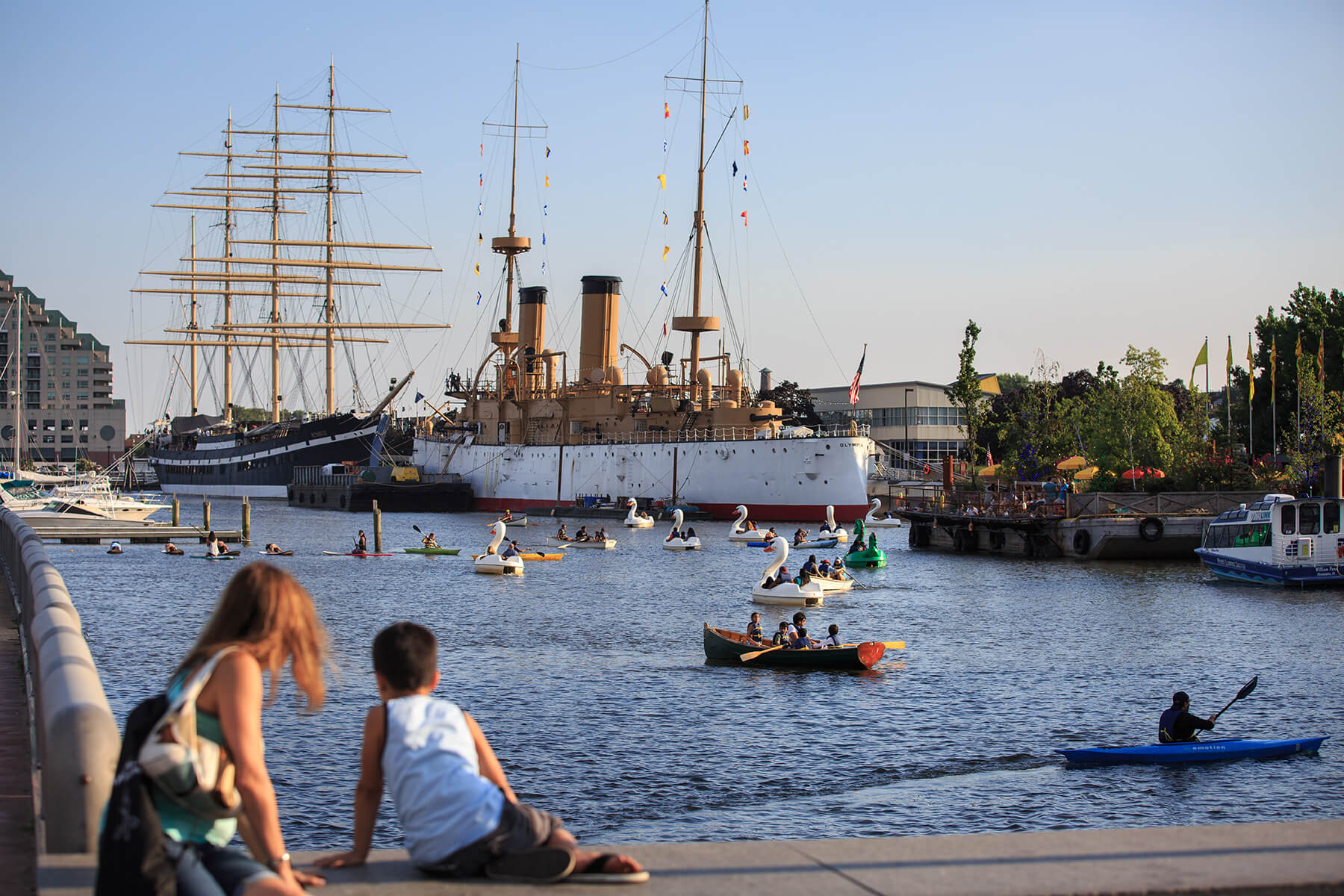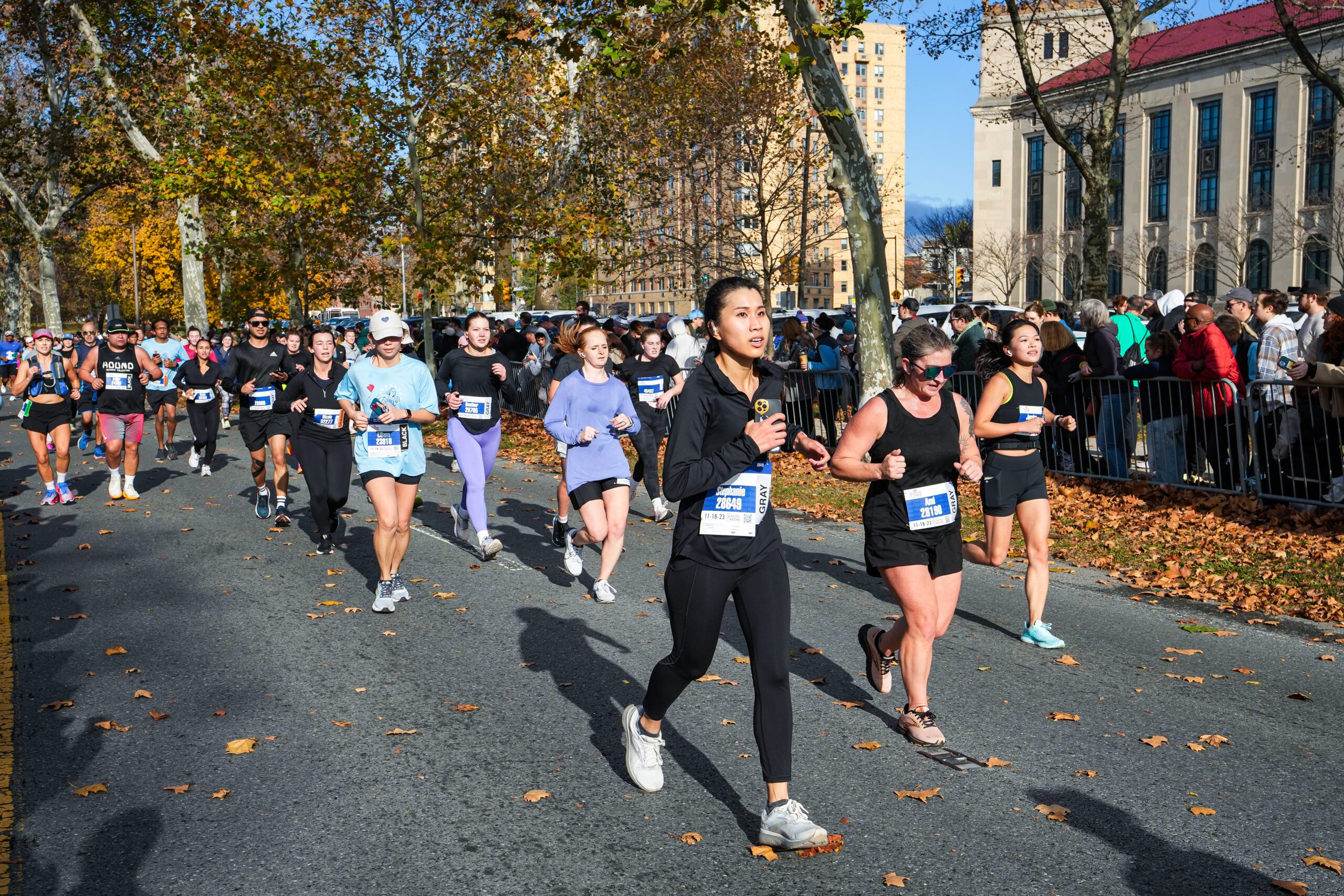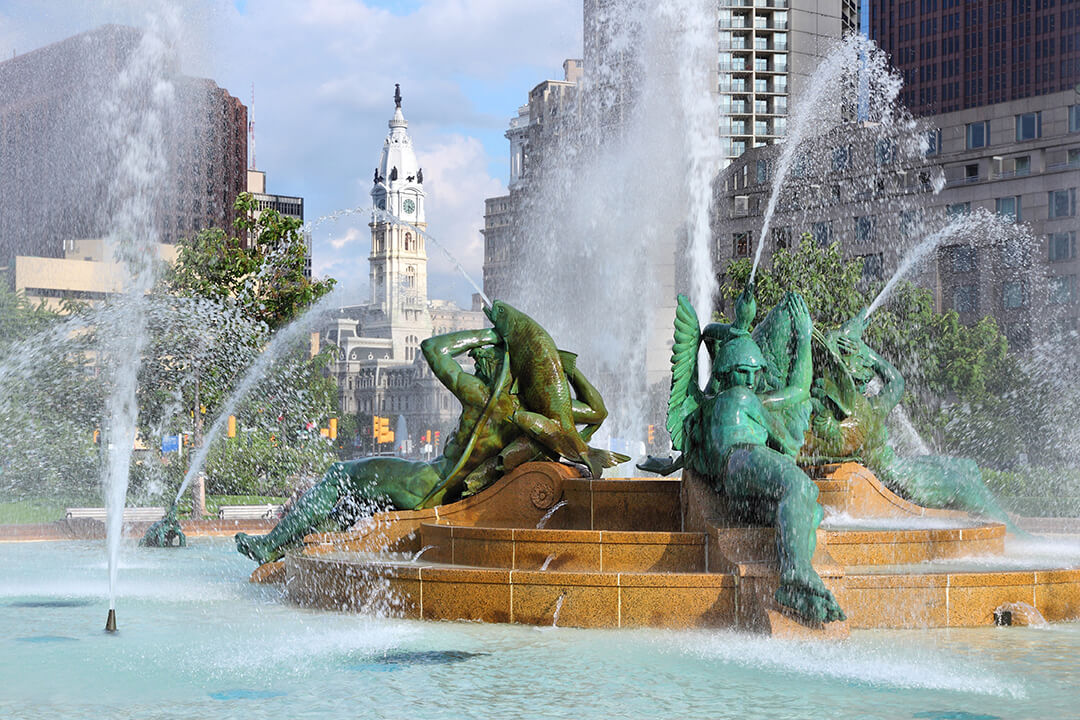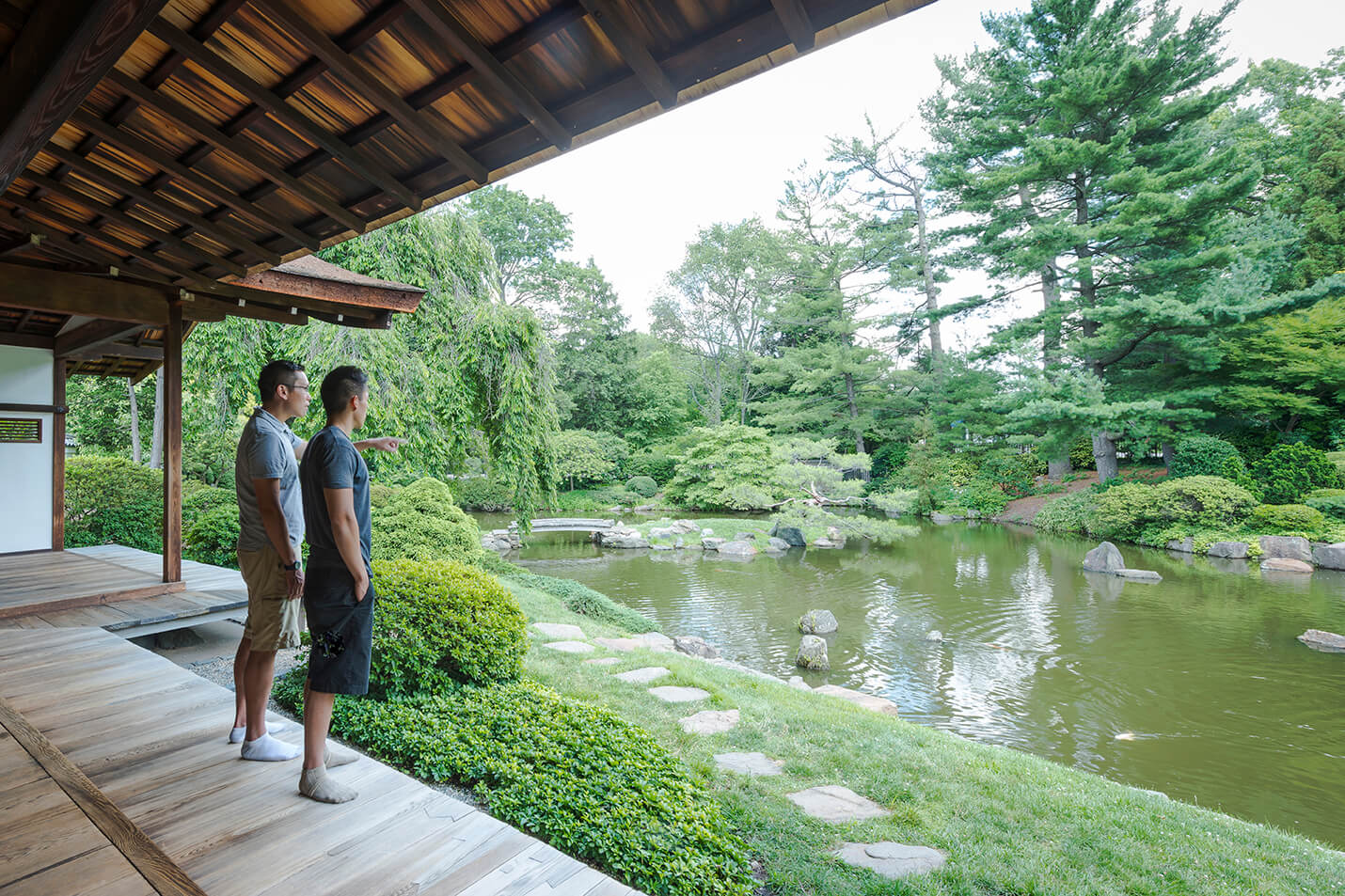
From local parks to outdoor attractions, Philadelphia offers plenty of ways to connect with nature and unwind outdoors.
Explore Fairmount Park
With 2,000-plus acres, making it one of the country’s largest urban park systems, Fairmount Park is a vast outdoor playground. It is made up of 63 individual parks, more than 200 historic buildings, an impressive collection of public art, and the country’s first zoo. Fairmount Park Conservancy’s Digital Guide is a helpful tool that will aid your exploration of the parks.
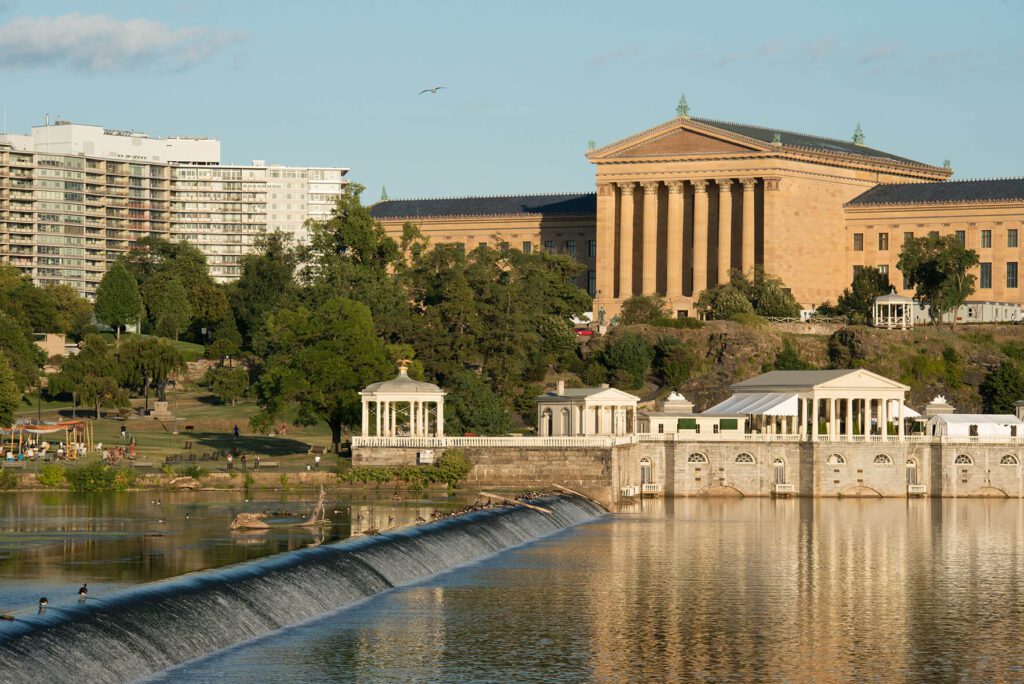
Fairmount Water Works with the Philadelphia Museum of Art perched high atop the hill behind it. Photo by S. Spitzer for PHLCVB.
A great place to start your park tour is the Fairmount Water Works, a National Historic Landmark along the Schuylkill River. In 1820, the city added public gardens around the groundbreaking pumping station as a way of protecting the water system and preserving green space. Today, the iconic Greek Revival buildings provide excellent views of picturesque Boathouse Row and the Philadelphia skyline.
History and architecture buffs will enjoy the many 18th and 19th century homes found throughout the park. These houses once served as summer villas for wealthy Philadelphians. Perfect for families is Smith Memorial Playground & Playhouse, a mansion-turned-playhouse for kids featuring a 60-foot wooden slide.
Public art is scattered throughout Fairmount Park with works by Alexander Milne Calder, Frederick Remington, William Rush, and more. Also located within the park is Shofuso Japanese House, a replica of a traditional 17th century Japanese home. Highlights include a pond garden with tiered waterfall, koi fish, and a tea garden with a traditional tea house.
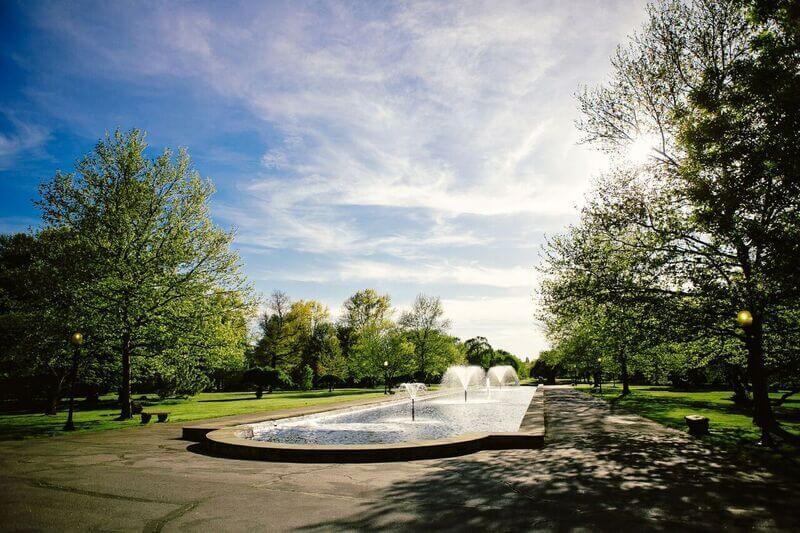
Fairmount Park Horticulture Center. Photo courtesy of Constellation Culinary Group.
West Fairmount Park is also home to the Horticulture Center. This exhibition hall and greenhouse was built in 1979 on the grounds of the 1876 Centennial International Exhibition. Open daily and free to the public, the Horticulture Center features tropical and succulent plants, demonstration gardens, and butterfly garden.
Hit the trails
An extensive system of trails winds throughout the Philadelphia region, making it easy to get out and get around. Popular with bikers, runners, and walkers is the section of the Schuylkill River Trail that cuts through the city. The trail journeys through the Manayunk Towpath, Kelly Drive, Boathouse Row, and the Schuylkill Banks. Ambitious cyclists can continue on the trail 25 miles west to Valley Forge National Historical Park, the site of a notable Revolutionary War encampment.
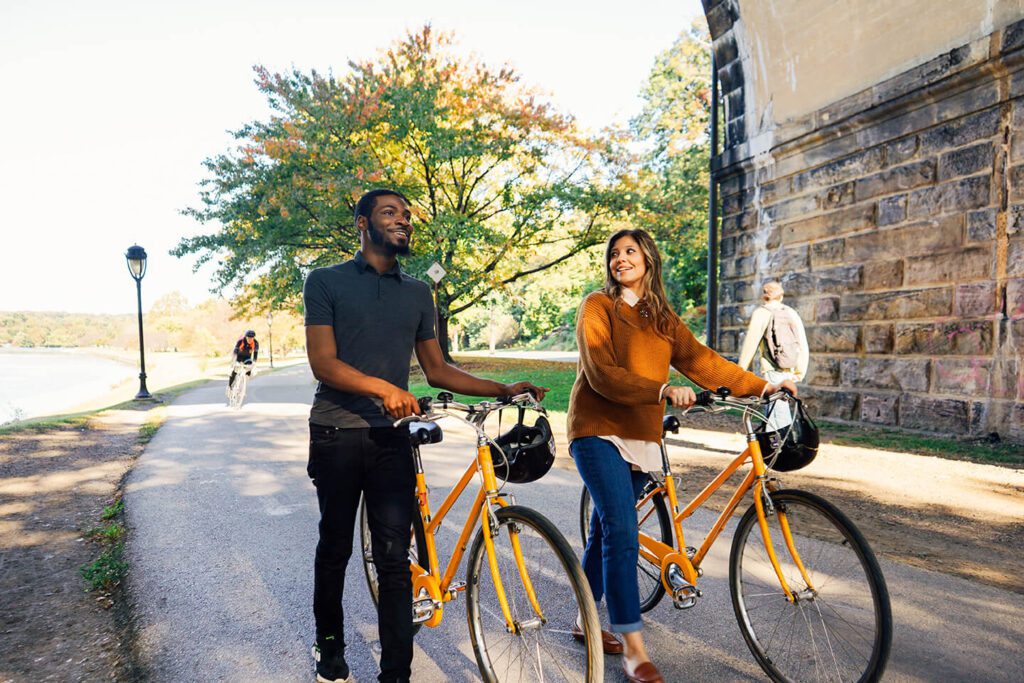
Renting bikes from Wheel Fun Rentals is a great way to explore the Schuylkill River Trail along Kelly Drive in East Fairmount Park. Photo by K. Huff for PHLCVB.
Go off the beaten path to find hidden gems popular with locals. The Trolley Trail follows a former trolley route, winding through tunnels and other cool structures, like the Stone Arch Bridge. You can also run the route of a famous Philadelphia boxer — not Rocky — Joe Frazier. Boxers’ Trail, a 3.8-mile gravel and dirt path, owes its name to “Smokin’” Joe, who frequently trained on it.
Head deeper into the woods along the 50 miles of trails in the Wissahickon Valley Park, located in the northwest section of the city. Trails range from easy to challenging, with hidden landmarks located throughout. Landmarks include artist Jody Pinto’s Fingerspan pedestrian bridge and the 1883 Toleration statue of William Penn that sits high above the trail.
Discover William Penn’s original city squares
When Pennsylvania founder William Penn laid out the plan for Philadelphia, he famously included five squares, one at each of the city’s cornerstones and one in the middle. These squares, each with their own identities, remain vital to the city to this day.
Rittenhouse Square, lined with alfresco restaurants, is named for David Rittenhouse, a famous astronomer and first director of the U.S. Mint. Home to fountains and public art, pop-up events, and a seasonal farmers market, it’s also an ideal locale for people-watching.
Lower-key Washington Square was named after George Washington and is home to the Tomb of the Unknown Revolutionary War Soldier, located catty-corner to Independence Hall. The square is part of Independence National Historical Park and is surrounded by charming restaurants and historic buildings.
Dilworth Park, named after former city Mayor Richardson Dilworth, is on what was Centre Square, the center of the city. The square became the home of City Hall in 1871, with the construction of the famed Beaux-Arts building. Today, Dilworth is a social hub, with an ice-skating rink in the winter and seasonal pop-ups year-round.
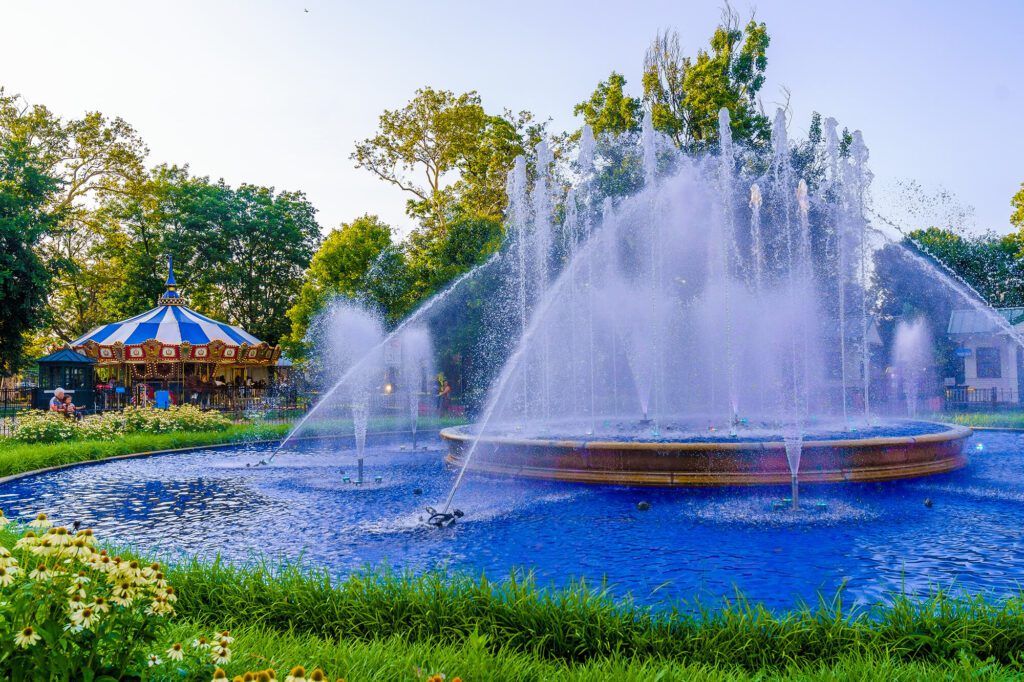
Franklin Square’s fountain show. Photo by J. Fusco for Historic Philadelphia.
Family-friendly Franklin Square, named after Founding Father Benjamin Franklin, attracts kids with its history-themed mini golf course, classic carousel, and extensive playground. At the centerpiece of the square is a large fountain featuring water shows set to lights and music.
At the center of the Benjamin Franklin Parkway is Logan Square, easily identified by the majestic Swann Memorial Fountain. Alexander Stirling Calder designed the fountain to honor Philadelphia Fountain Society founder Dr. Wilson Cary Swann. Originally called Northwest Square, the city renamed the area after statesman James Logan in 1825.
Survey the Delaware River
The Delaware River Waterfront is a vibrant destination for outdoor fun. Blue Cross RiverRink is a great attraction featuring fantastic food and craft beer. The RiverRink features ice skating in the winter and roller skating in the summer. In the spring and summer, experience the festive Spruce Street Harbor Park, with local food vendors surrounding a colorful, hammock-filled urban oasis.
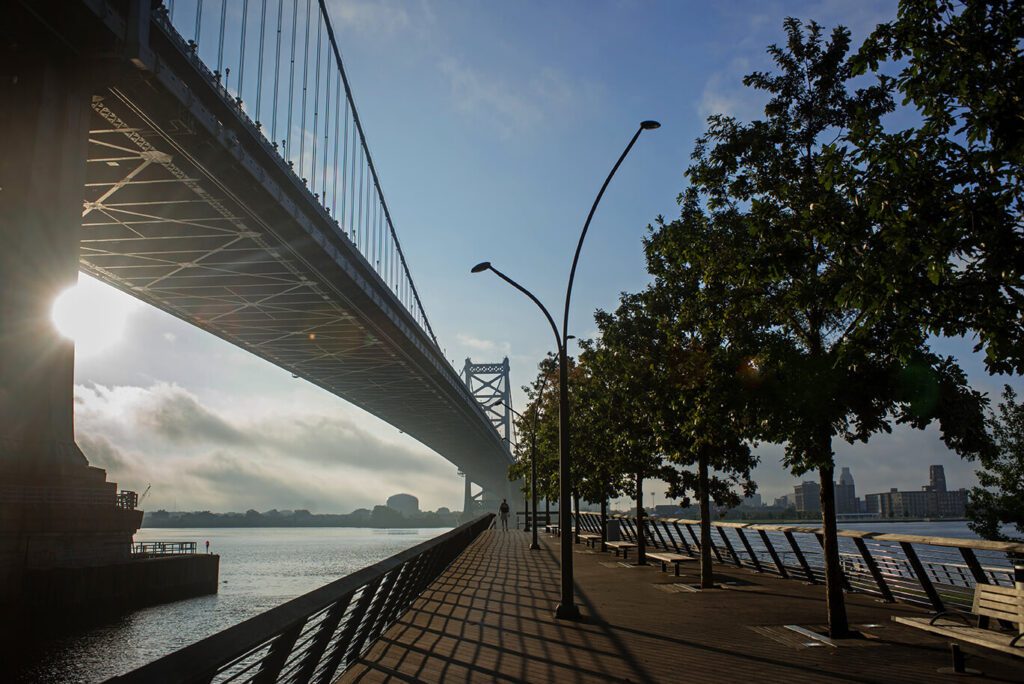
Race Street Pier offers impressive views of the Delaware River and the Benjamin Franklin Bridge that soars overhead. Photo by M. Stanley for DRWC.
Cherry Street Pier, a mixed-use public space converted from a historic pier, is open year-round. The space is always hosting something new, from pop-up markets to art installations. For picturesque views of the Ben Franklin Bridge, head further north to Race Street Pier, perfect for lazing on the spacious lawn while enjoying river views.
At the southern end, Washington Avenue Pier honors the waterfront’s shipbuilding heritage and historic port-of-entry for immigrants. A path brings visitors to the tip of the pier and Land Buoy, a climbable 55-foot spire by artist Jody Pinto that offers additional city and river views.
While in Camden, explore the ocean and its inhabitants at Adventure Aquarium, home to more than 15,000 aquatic animals. See sharks swim through 550,000 gallons of water as you walk through a glass tunnel, journey to the Amazon through the interactive Piranha Falls exhibit, or spot hippos swimming around in the immersive Hippo Haven.
Cherish the spring blooms
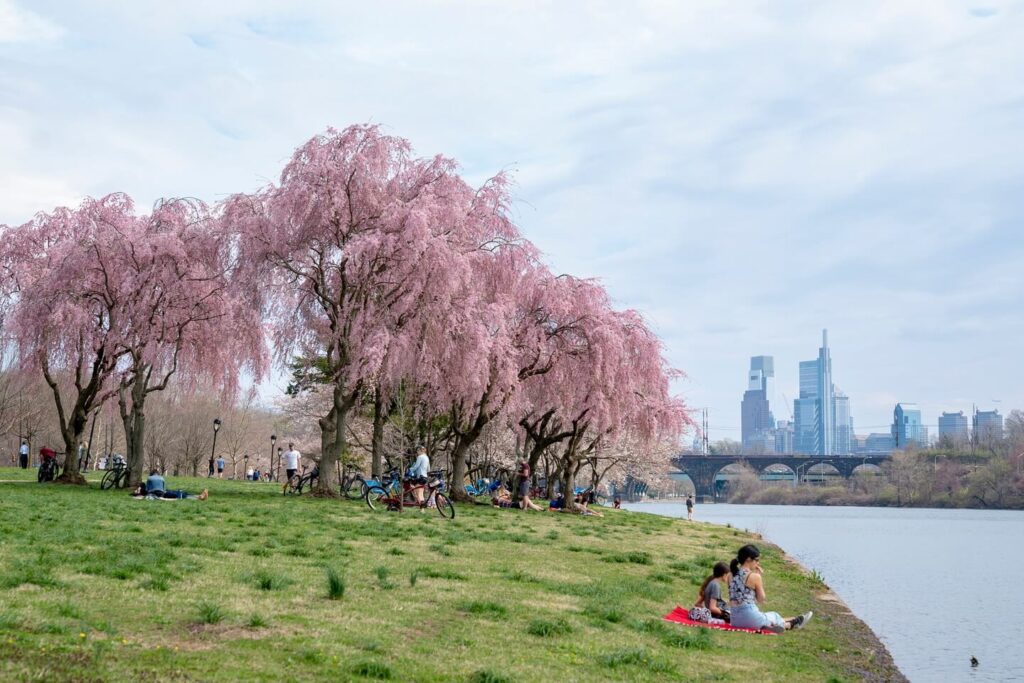
Cherry Blossoms, Kelly Drive. Photo by R. Rabena for VISIT PHILADELPHIA®
The Japanese government gifted the trees to Philadelphia in 1926, as a symbol of international friendship and in honor of the United States’ sesquicentennial celebration. The Japan America Society of Greater Philadelphia (JASGP) continued this legacy from 1998-2007, planting an additional 1,000 trees throughout the city. Each spring, beautiful cherry blossoms, magnolia blooms, and other spring flowers begin to fill Philadelphia’s parks and charming residential streets.
These colorful hues of the spring season can be found brightening up Philadelphia’s most popular sites, including around the Philadelphia Museum of Art, at the Shofuso Japanese House and Garden, and of course, at the Fairmount Park Horticulture Center. However, you don’t have to go to an attraction to see the bursts of pink and white. Cherry trees are abundant across Philadelphia, including on resident streets in the Fairmount neighborhood and near Washington Square Park.
True to its name, the Magnolia Garden in Society Hill features a collection of magnolia trees that make it a must-visit during the early spring months. Dedicated in 1959, the park was donated by the Garden Club of America in honor of the founders of the United States. It was also inspired by George Washington’s favor of magnolia trees.
Check out our discover page for more outdoor inspiration, including seasonal activities, curated itineraries, and tips on what to explore in Philadelphia’s countryside.
